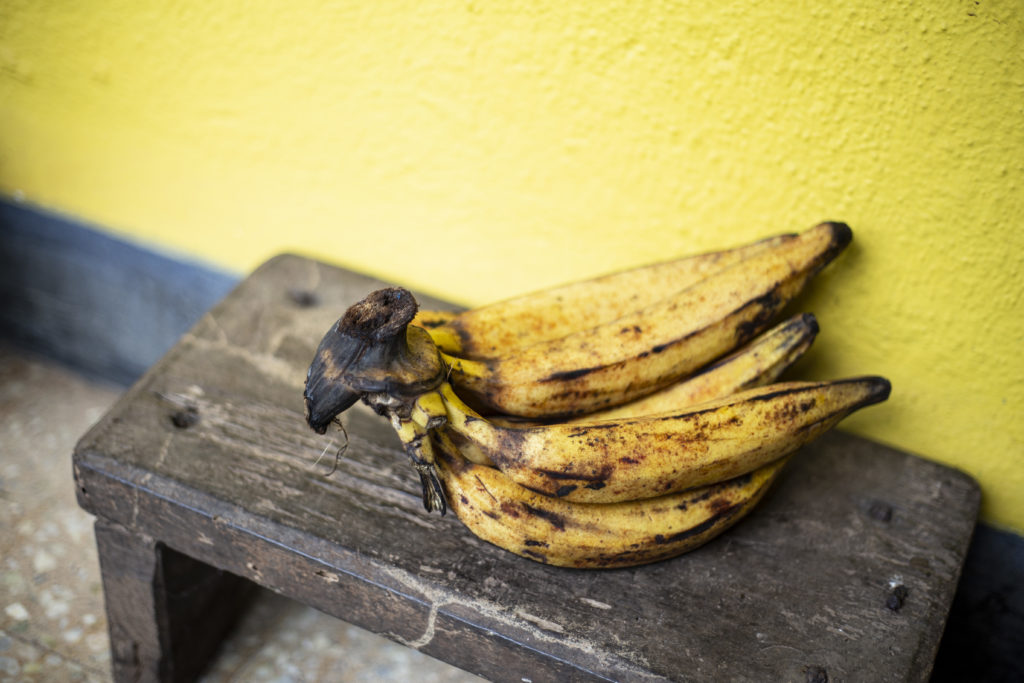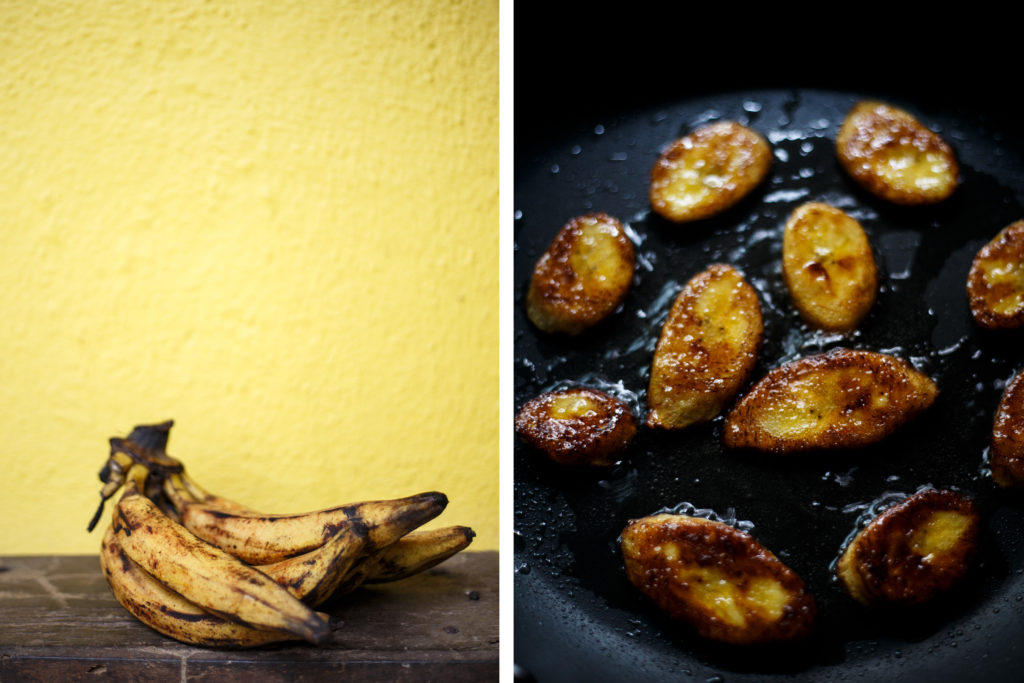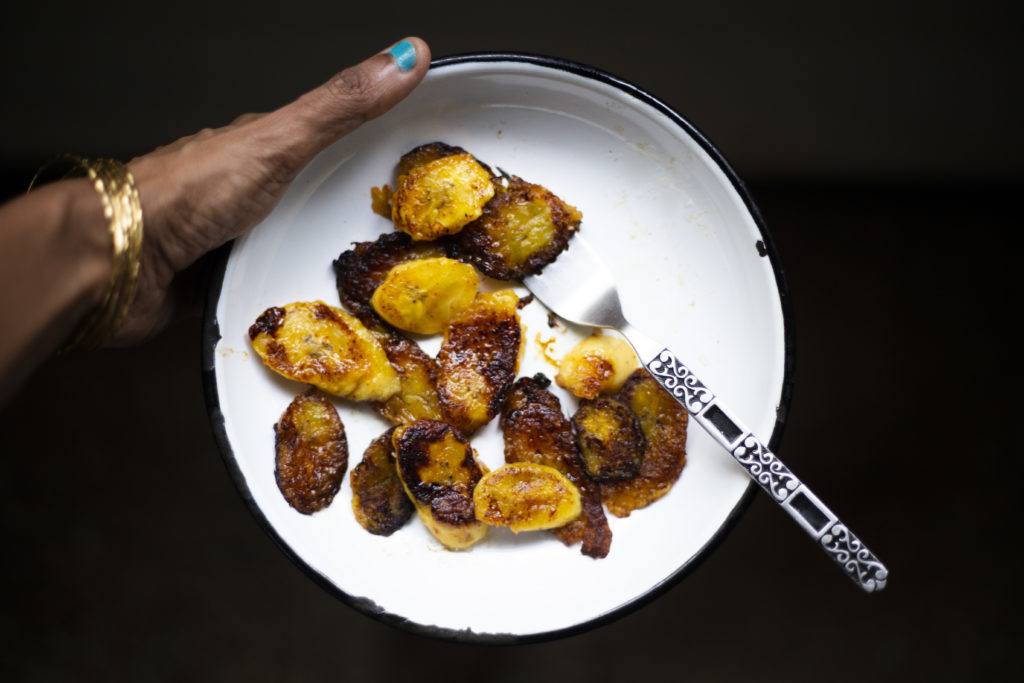
The vegetable markets during this time of the year in Goa are usually packed with local produce. It is the monsoon and green is the colour most visible outside the window. This time though, a lot of local growers have been moving their one-person operations from the market, to the side of busy roads in different towns. The pandemic and general mood around it has made business difficult for everyone but the effects will mostly be felt by those who depend on a meager amount to sustain them on a daily basis.
I bought these plantains from a couple selling small bundles of locally grown fruits and vegetables outside the back of their van. They had 2 varieties – the green plantains and these long yellow ones that people in Goa call “Moira bananas or Moidechim kelim, Moira being a village in Goa known for its plantain-tions, back in the day. There is a lot of history of how the herb was introduced to Goa. Colonial history says it was the Franciscan priests (Portuguese) who brought it from Kerala to Moira. These days, cultivation has moved to other parts of Goa, but the name of the banana has stuck.
My grandma pronounced them as “planten” and my most vivid memory is eating them fried, by her hands. I don’t think I ever ate them anywhere else (at least knowingly) while I lived in Goa and recipe searches online show plantains cooked this way and then dunked in a sugar syrup. The Moira plantain is much starchier than a typical banana and depending on what stage of rawness you eat it, it has to be cooked to be edible.
Fried plantain

This style of eating plantains is popular in West Africa, Latin America and depending on where you eat it, it can either be a sweet or savory preparation. The darker the spots on the plantain skin, the more they will caramelize while cooking because of the higher sugar content. If the plantain is completely blackened, then it’s best to mash and turn it into a fritter. My preferred stage to use them is in between few dark spots to how it looks in the photo above (ripe, yet firm).
Ingredients
- 2 ripe, yet firm yellow plantains
- 1 tsp cane or coconut sugar, optional
- Coconut oil, to fry (you can also use ghee)
- Goan rock salt, to finish
Method
Peel the plantains and slice them diagonally, along the length, into 1 inch pieces.
Coat the slices of plantain with sugar (if using) and then toss gently, to coat.
Heat coconut oil or ghee in a frying pan on medium-high heat. Add the plantains to the pan, making sure they aren’t touching each other and there is no overcrowding. Cook them for 1-2 minutes on each side and then reduce the heat to low. Keep cooking, and checking the colour until they turn a nice deep golden brown, about 2-3 more minutes more in total. They should be crispy on the edges and soft in the middle
Take the plantains off the heat and let them drain on a wire metal rack or on a paper towel. The wire rack will help retain some of the crispness while it cools whereas the paper towel won’t. Use whatever is best for you, because both will taste just as good.
Repeat the process until all the plantains are cooked. Sprinkle rock salt on top, if using and eat warm during tea time or during lunch with rice and beans or dal.
